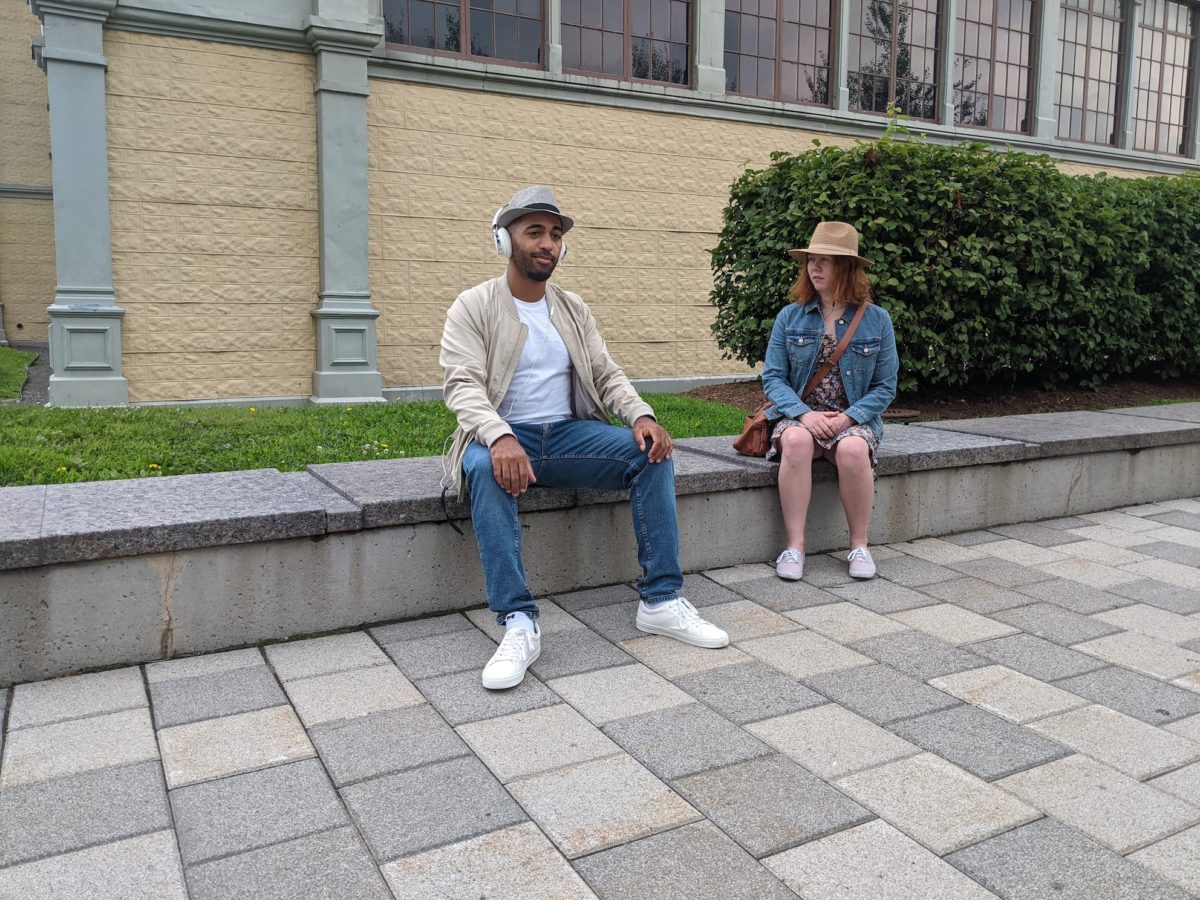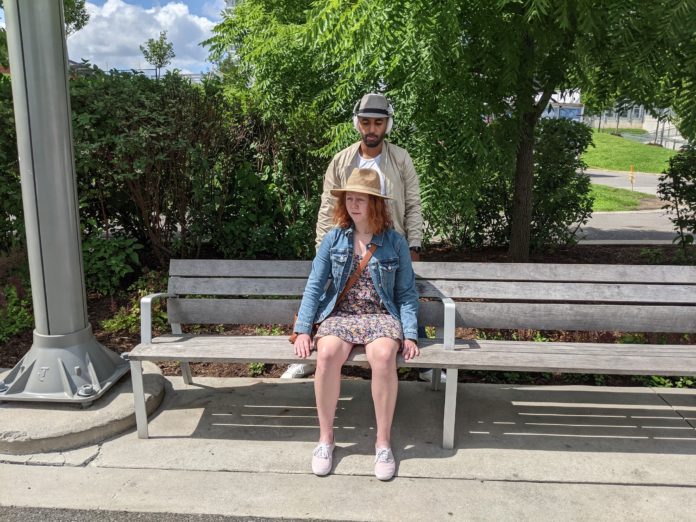C-O-N-T-A-C-T Ottawa is a live theatre production that is underwhelming, overrated and gimmicky at best.
Presented by the Glebe Business Improvement Area (BIA), the show is in Ottawa from July 22 to Sept. 5. While its outdoor nature makes it a fitting production for Ottawans mindful of COVID-19 precautions, the blending of technology with live actors for an immersive experience is a benevolent but disappointing choice.
After downloading an app onto their cell phones and entering a numerical code provided by the show’s usher/stand-by tech support, audience members connect to the performance through the app and follow the live theatre production as it moves around Lansdowne Park.
Listening through their earbuds, audience members can hear the show’s dialogue, voiced by Aoife Kennan and Richard Heap, as well as the musical soundtrack by Cyril Barbessol that accompanies the pre-recorded conversation.
The first character to appear is Sarah, played by Lucy Sanci. Sarah is struggling with her father’s death and an overwhelming sense of isolation that leads her to feelings of anxiety and distrust in the world. Her feelings parallel those of many people since COVID-19 lockdowns and restrictions began in March 2020.
Sarah then meets Rafael, played by Chris James. Rafael is Sarah’s guardian angel from another world who appears to help Sarah cope with her pain and anxiety.

In theory, listening to the production’s audio through one’s earbuds is a way for guests to be immersed in its emotional 3D soundscape. However, in practice, the idea falls flat.
The use of technology detracts from the live theatre and immersion into Sarah’s unfolding story. Frustrating tech issues, such as the audio not downloading or disconnecting throughout the performance, result in guests missing out on the start of the show and other critical events throughout.
With unreliable audio, keeping up with the story via the actor’s body language becomes even more critical. However, to get a good view of the performance, audience members must strain to see the actors whose facial expressions are often obstructed because they have turned their backs to the audience.
The audience must also be mindful of not getting in the way of the actors, which pulls their attention away from Sarah’s unfolding storyline. At first, following the actors around as they perform is exciting and piques the curiosity of audience members, but after a while, this format becomes irritating and troublesome.
The immersive aspect of the show is also occasionally broken when people who are not audience members or actors stroll and bike through where Sanci and James are trying to act.
Even if you’re able to get an uninterrupted view, the acting by Sanci and James is underwhelming. Their emotions do not match the intensity of those being communicated by Kennan and Heap over the audio. Guests are left only partly satiated by Sanci and James’ exaggerated and gimmicky body movements that somewhat make up for their mostly blank facial expressions.
Finally, the location where the show is held could be better utilized. Only the outdoor space surrounding the Aberdeen Pavilion is used which leaves audience members hoping for a tour of the park’s restaurants, shops, stadium, and sports and recreation park sorely disappointed.
Lighting and background scenery are essential aspects of any theatre production. By not using more of the park’s natural and industrial spaces, the show misses out on changes in setting that could provide cues for scene changes and help set the mood.
Overall, C-O-N-T-A-C-T Ottawa is a confusing theatre experience that lacks a sense of “theatre magic” due to the malfunctioning technology of the app. The only aspect of the experience that pulls through on its immersive theme is Barbessol’s background music. Without this to enhance the soundtrack, it feels more like a radio or podcast drama with uninspiring physical actors and a location that was selected as a half-hearted afterthought.
C-O-N-T-A-C-T was conceived by Gabrielle Jourdain, originally directed by Samuel Sené and written by French playwright Eric Chantelauze. It was then adapted into an English version by Quentin Bruno and directed in Ottawa by Charles Roy.
To learn more about the show and purchase tickets, visit its website.
Featured image provided by C-O-N-T-A-C-T Ottawa.






